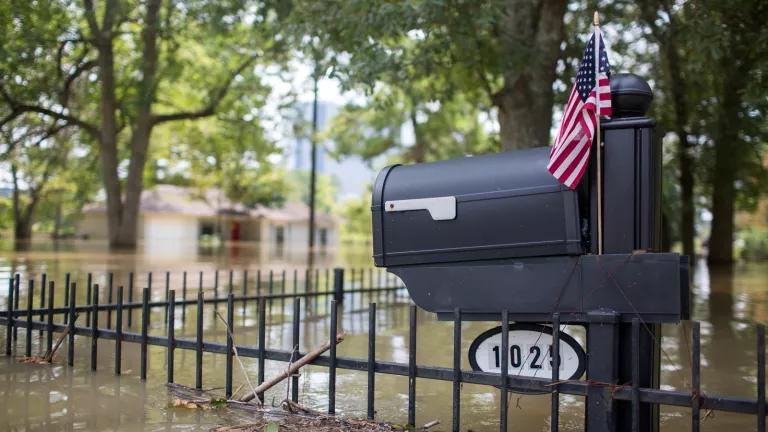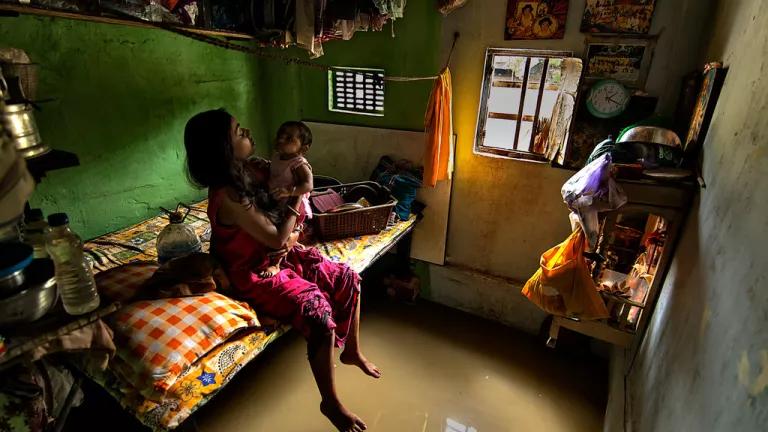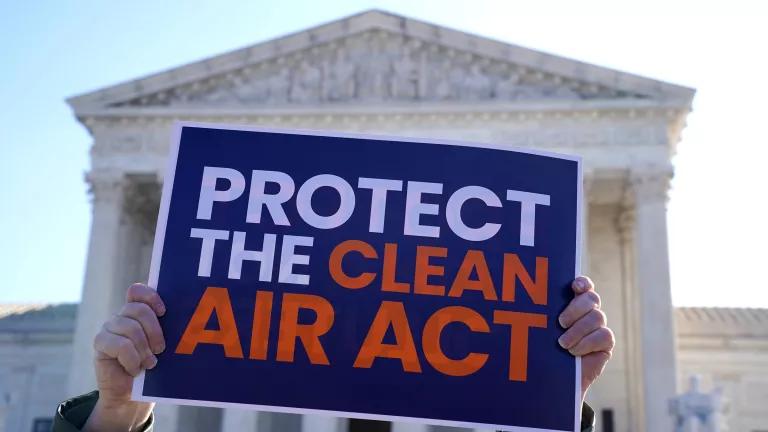The Emerging Public Health Consequences of Hurricane Harvey

Hurricane Harvey dumped a record 275 trillion pounds of rain on the Houston area in 2017. At least 65 people drowned in the resulting flooding and another 28 died from other storm-related causes.
That tragic death toll is only part of the public health story of Hurricane Harvey. Floods present a complex array of threats to mental and physical well-being, and it will take years to unravel them all in Texas. Case in point: Health researchers in Louisiana are still trying to understand Hurricane Katrina’s impacts on human health 13 years after that monster storm inundated south Louisiana and Mississippi.
And meanwhile, pollution from fossil fuels keeps driving up global temperatures—intensifying the risk of more dangerous floods and making it harder for the U.S. health system to prepare for future disasters.
Here’s a peek at what we do know about Harvey’s impacts on human health, and how communities need to better prepare and protect themselves before the next storm hits.
Sewage in the Streets
Hurricane Harvey damaged or disrupted operations at 40 wastewater treatment plants that serve nearly 169,000 people, which caused at least 25,000 gallons of sewage-tainted water to flood streets and waterways. And this is a conservative estimate; 20 percent of the treatment plants didn’t report on the amount of wastewater they spilled. Six to 10 days after Harvey moved away from Houston, tests of stagnant water inside homes showed more fecal bacteria than outdoor floodwaters did. Six months after the storm, at least three bayous near Houston showed higher-than-normal levels of fecal bacteria.
The sewage and other contamination in the water may have caused the observed uptick of skin infections in area residents; at least one woman died of a “flesh-eating” bacterial infection. Bacterial contamination of flood waters also has the potential to cause eye, ear, and gastrointestinal infections.
Millions of Pounds of Air Pollution
Ten months after Hurricane Harvey, 16 percent of Texas Gulf Coast residents affected by the storm said they had a new or worsened health condition. Nearly a third of those new conditions were respiratory problems such as asthma.
There may be multiple culprits causing the onset of new breathing problems, including bacteria and mold growth in damaged homes and dust from repair activities. Preliminary results from a Harvard study suggest that average levels of fine particle pollution were nearly 32 times higher in homes flooded by Harvey than in non-flooded homes.
Another possible cause of breathing problems is exposure to chemicals. Between August 23 and September 30, 2017, flood damage to industrial equipment and storm-related changes in facility operation led to the release of an estimated 8.3 million pounds of air pollutants—including benzene, a carcinogenic component of pesticides, detergents and other common products. Houston-area residents complained of nausea, eye irritation, and other issues related to industrial pollution in the immediate aftermath of Harvey. The long-term health implications are so far unknown.
Unmet Mental Health Needs
Flooding can affect mental health and well-being in myriad ways, and unfortunately mental health services to assist with coping may not be readily accessible after a flood—particularly in rural and lower-income communities.
Three weeks after Hurricane Harvey, a small study of Houston-area residents found probable PTSD in close to half of participants. Ten months after Hurricane Harvey, 31 percent of storm survivors surveyed from 24 Texas counties reported unhealthy coping behaviors, new prescription medication, or other mental health problems. But just 8 percent of residents affected by Harvey reported getting mental health services to cope. The cost of services was the main barrier to getting help.
Good News and Bad News on Climate Preparedness
The ability to minimize negative health outcomes of major flooding hinges largely on how well local communities, businesses, and governments prepare for, cope with, and recover from storms. In Texas, post-Harvey surveys of health institutions revealed both strengths and weaknesses in their plans to keep people safe.
One positive example (and role model) is the Southeast Texas Regional Advisory Council (SETRAC), a healthcare coalition whose preparedness committee works to “preserve the medical infrastructure of the region” when emergencies strike. The lessons SETRAC learned from Tropical Storm Allison; Hurricanes Katrina, Rita, and Ike; and a June 2017 simulation exercise called “Operation Tempest” helped the Council safely evacuate more than 1,500 patients before Harvey and quickly return healthcare facilities to full capacity after the storm.
However, the Texas healthcare system needs more work to get ready for the next superstorm fueled by climate change.
For example, a new report from the Texas Hospital Association found that many communities did not have enough emergency shelters to deal with Hurricane Harvey. Furthermore, some shelters were sending people with non-urgent medical needs to local hospitals, straining available resources. One hospital had to evacuate its 40 dialysis patients to other facilities when it ran out of clean water.
Then, there were the nursing homes and other long-term care facilities that had neither emergency plans to deal with an event like Harvey nor faced post-storm “consequences for their failure to protect vulnerable residents.” From late August to early October 2017, the Texas Health and Human Services Commission received 90 storm-related complaints about 53 long-term care facilities for things like overcrowding, failing to provide medical treatment, and abandoning residents during evacuations. State fines for this lack of preparation—if they were levied at all—were on the order of a few hundred dollars for each facility.
Even as scientists continue to study the health effects of the storms behind us, our leaders in government and healthcare need to be prepared for an increasingly unsafe future. As a team of physicians from the Houston Methodist Hospital wrote after Hurricane Harvey:
“Our goal is to be perpetually prepared because we cannot predict whether a disaster will occur in any given time period.”
That’s wise in normal times. But in these abnormal, super-heated times that are posing ever more challenging situations to our health and our communities, being prepared for the worst is essential and urgent.



